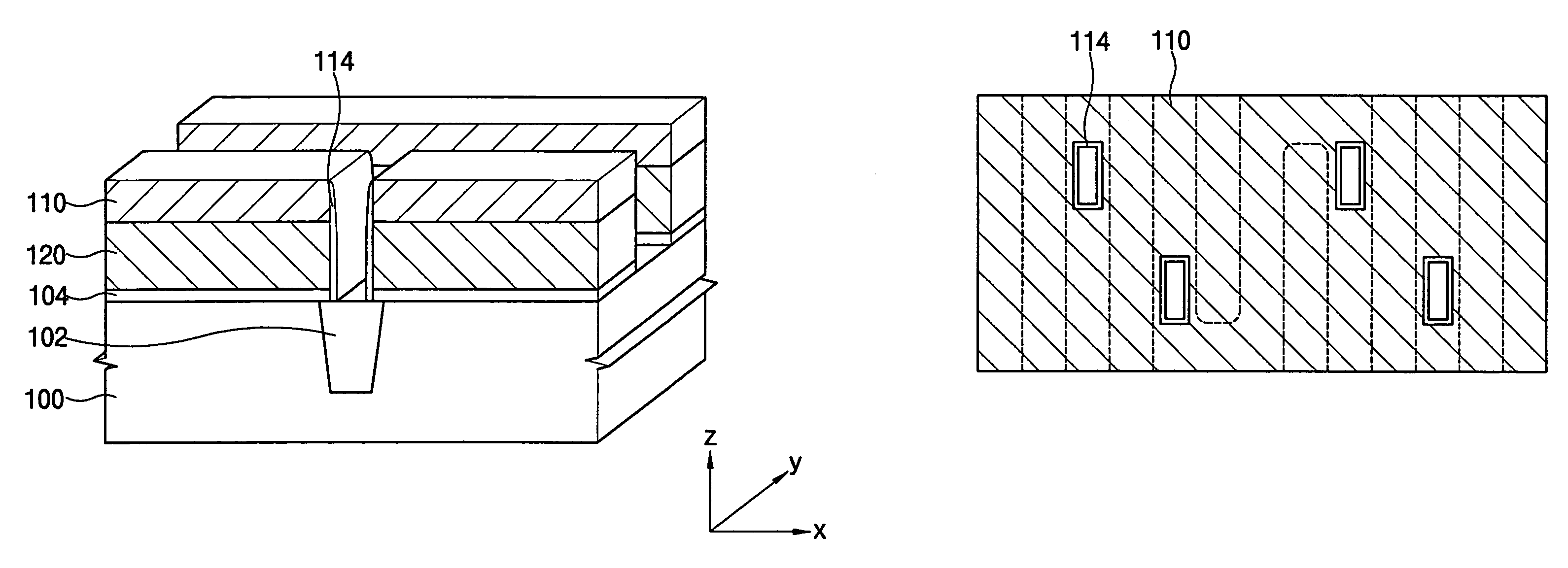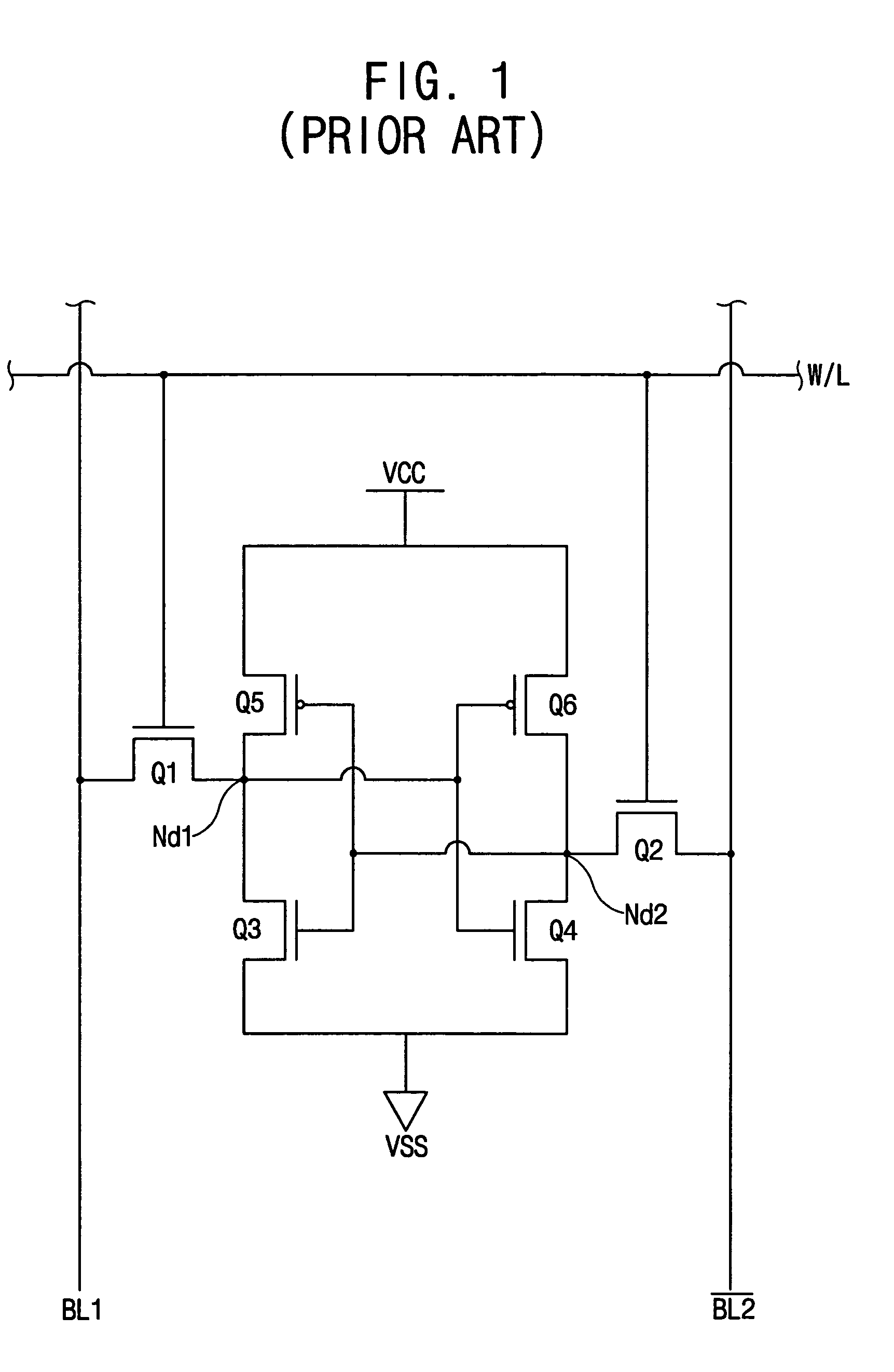Method of manufacturing a semiconductor device
a manufacturing method and semiconductor technology, applied in the direction of semiconductor devices, electrical appliances, transistors, etc., can solve the problems of transistor operating failure, sram transistors cannot be formed into a lined gate structure, etc., and achieve the effect of preventing the gate pattern from being broken and sufficient processing margin
- Summary
- Abstract
- Description
- Claims
- Application Information
AI Technical Summary
Benefits of technology
Problems solved by technology
Method used
Image
Examples
Embodiment Construction
[0034]The teachings of the invention are described more fully below with reference to the accompanying drawings where exemplary embodiments of the invention are shown.
[0035]FIG. 4 is a plan view schematically illustrating an active region and a separated gate pattern in a cell of a full CMOS type SRAM according to some embodiments of the invention.
[0036]The cell structure of the full CMOS type SRAM according to some embodiments of the invention include the same components as that of the conventional full CMOS type SRAM as illustrated in FIG. 1.
[0037]That is, a cell of the full CMOS type SRAM according to some embodiments of the invention includes first and second pass transistors Q1 and Q2, a first P-MOS transistor Q5, and a first N-MOS transistor Q3. The first pass transistor Q1 electrically connects a first bit line BL1 with a first memory cell node Nd1, and the second pass transistor Q2 electrically connects a second bit line BL2 with a second memory cell node Nd2. The first P-MO...
PUM
 Login to View More
Login to View More Abstract
Description
Claims
Application Information
 Login to View More
Login to View More - R&D
- Intellectual Property
- Life Sciences
- Materials
- Tech Scout
- Unparalleled Data Quality
- Higher Quality Content
- 60% Fewer Hallucinations
Browse by: Latest US Patents, China's latest patents, Technical Efficacy Thesaurus, Application Domain, Technology Topic, Popular Technical Reports.
© 2025 PatSnap. All rights reserved.Legal|Privacy policy|Modern Slavery Act Transparency Statement|Sitemap|About US| Contact US: help@patsnap.com



